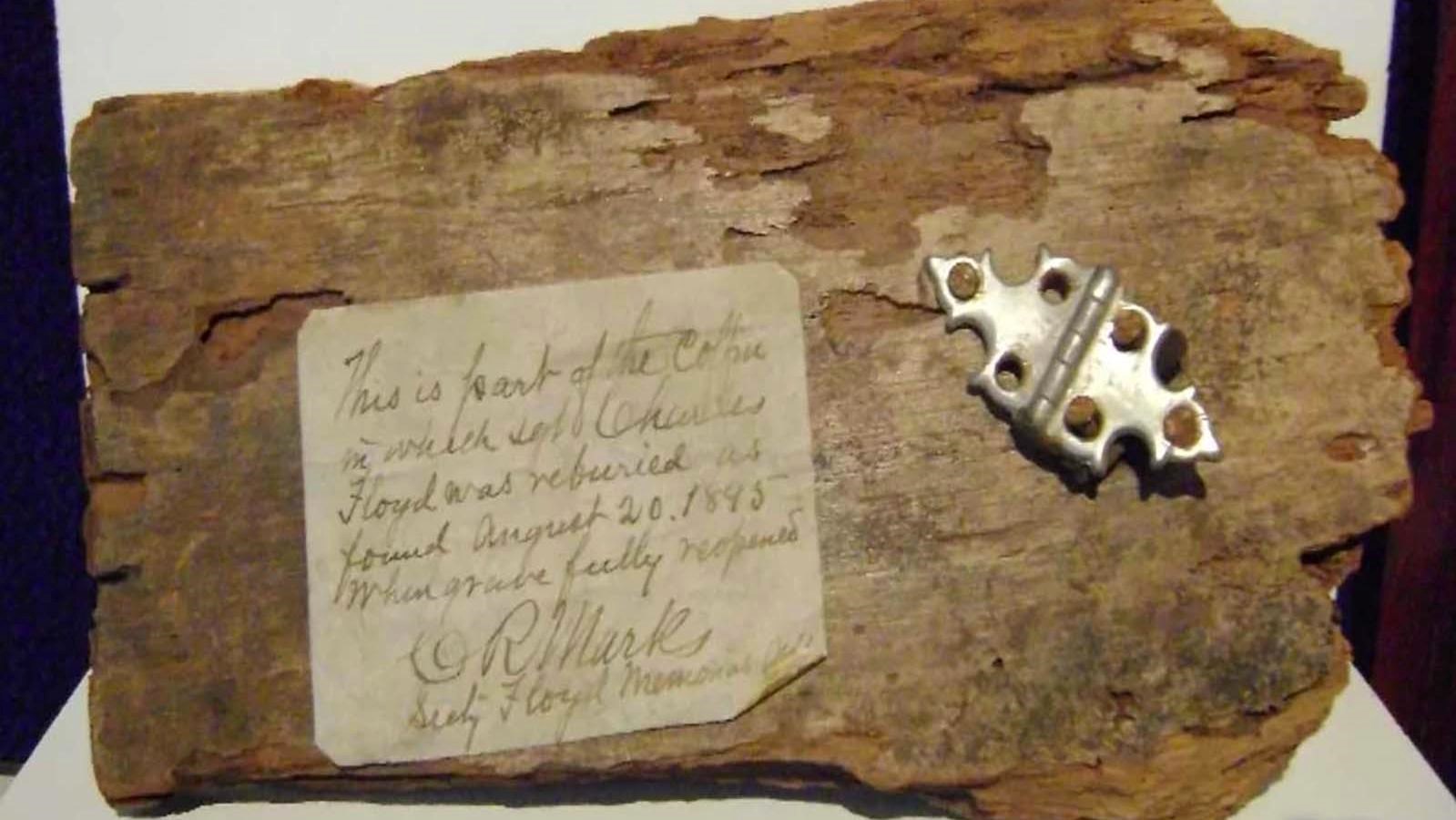Last updated: February 26, 2021
Place
Remnant of Sergeant Floyd’s casket at Sioux City Public Museum

Photo: Sioux City Public Museum
Quick Facts
Location:
Sioux City Public Museum
MANAGED BY:
Amenities
4 listed
Gifts/Souvenirs/Books, Historical/Interpretive Information/Exhibits, Information, Information - Ranger/Staff Member Present
But if you visit the Sioux City Public Museum, you’ll see this chunk of wood that is said to be a remnant of Sergeant Floyd’s casket.
Year after year, the Missouri River slowly eroded Floyd's Bluff, and rain exposed the end of the grave and washed away the cedar post that the Corps created to mark the site. So in 1857, concerned citizens of the little town of Sioux City recovered what remains they could find and placed them in a walnut coffin. They buried it 600 feet back from the river and remarked the grave.
After Floyd’s journal was discovered and published in 1894, there was renewed interest in his story and the 1857 grave marker was stolen by thieves. So his remains were moved once more on August 20, 1895 and placed beneath a large stone slab. That’s when this piece of the 1857 walnut coffin was recovered and retained by the Floyd Memorial Association.
For more information about the museum and affiliated sites, go to www.siouxcitymuseum.org.
